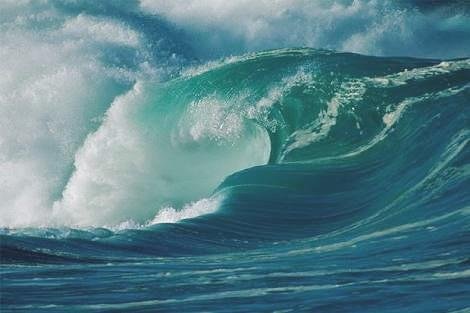
Tsunami comes from the Japanese language and consists of two syllables namely "tsu" (port) and "nami" (wave). Scientists used to mean the tidal wave or seismic sea waves.
Tsunami is a sea wave that comes suddenly with a high speed that leads to the coast, due to volcanic activity or earthquake under the sea.
Sequence of Cause:
When an earthquake occurs and the surface of the seabed rises down along the fault then that is when the tsunami is formed. The fault causes the balance of sea water to be disturbed. A large fault will produce big waves as well.
Shortly after the earthquake, sea water will recede. And will return to the mainland in the form of a big wave (tsunami).
Tsunamis also occur due to volcanic eruptions on the seabed causing high movement of seawater or nearby waters.
Tsunamis have a greater wave velocity than regular waves. Even up to 700km / h and almost equal to the speed of the plane.
Usually the tsunami wave height is 50 - 100 meters and spreads in all directions. The height of the tsunami is also affected by the shape and depth of the beach. Therefore the earthquake on the seabed is very possible for the tsunami.
Conclusion / Conclusion (interpretation):
In fact, the tsunami became one of the natural events that are very dangerous for humans because it can cause massive damage and could even take thousands of lives at once if happened suddenly.
Therefore we must be vigilant at all times and prepare ourselves to face the tsunami disaster. Although not all earthquakes and volcanic eruptions on the ocean floor cause a tsunami.